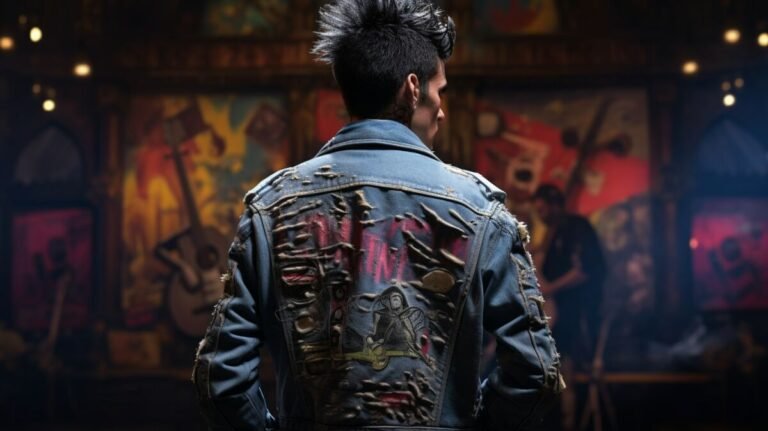Iron Patches for DIY Festival and Concert Outfits: The Quiet Backdoors of Style
When it comes to crafting DIY festival and concert outfits with iron patches, those little cloth badges that carry stories, jokes, or pure chaos, backdoors might be the only thing that separates a bland shirt from a thunderbolt of self-expression.
So forget “tutorial” tones. Let’s talk about sneaky, unconventional, almost underground methods that rewire how you approach patches. I’ve seen people do things at Glastonbury and Coachella that made me pause mid-step, “Wait, how the hell did they do that?” This is about those people. The quiet geniuses who stitched rebellion into fabric.
1. The Patch Swap Network (Underground Trading Instead of Buying New)
Most people? They head to Etsy or Amazon, scrolling endlessly for the “perfect patch.” But the secret backdoor? You don’t buy iron-on patches, you trade them. There’s a shadow economy (and no, not shady shady, just… overlooked) of patch swapping. Music forums, Discord servers, even random Instagram DMs, people exchange iron patches the way kids once swapped Pokémon cards under the desk.
Why it works? Scarcity breeds coolness. If your jacket carries a custom patch that can’t be found on Google anymore, something someone dug out of their dad’s storage chest, it instantly becomes a conversation starter. You’re no longer wearing fashion, you’re wearing a story.
I once swapped a faded Nirvana iron patch for a vibrant, custom-made rave smiley someone stitched while waiting for their visa to clear. It wasn’t about value; it was about energy. Try this at your next festival: start a “patch swap circle.” The randomness creates outfits money literally can’t buy.
2. Heat-and-Melt Distortion (Accidental Genius Through Chaos)
Iron patches are supposed to look neat. Crisp edges, no fray, clean bond. But here’s a thought: what if you break the rules? Overheat the iron, melt the edges a little, let the colours blur into abstract shapes. It’s risky, yes, you might ruin the custom patch (or your shirt). But that’s the thing, ruin is part of art.
I’ve watched people in Berlin clubs flaunt jackets where embroidered patches looked like they had survived a fire, and it wasn’t just style; it was a statement. A distortion that screamed: “This is not factory-made. This is battle-tested.”
The smell of scorched fabric in the moment is unpleasant, like burnt toast at 2 a.m., but what’s left behind? An outfit that carries chaos stitched into its skin. Real-world? Think of Billie Eilish’s shredded oversized fits; it’s not the clean lines that make them iconic. It’s destruction reimagined as design.
3. The Placement Illusion (Breaking the Grid)
Everyone slaps custom patches on the chest, back, or sleeves. Predictable spots. The backdoor approach? Throw symmetry out the window. Place one patch under the armpit (yes, it peeks out when you raise your hand mid-chorus), another upside down at the hem, maybe one over a pocket so the function is slightly ruined.
Why it works? Humans are drawn to irregularity. A leather patch that feels “wrong” forces the eye to linger. It’s like stumbling on a typo in a billboard; you can’t unsee it.
I once saw a guy at Primavera Sound with a custom patch sewn half over the zipper line of his hoodie. Annoying? Maybe. But unforgettable. His outfit looked like a glitch in the matrix, and honestly, we need more glitches.
4. DIY Collab With Strangers (Crowdsourced Outfit Evolution)
Here’s an idea I stumbled upon at a food stall during a muddy night at Leeds Festival: hand someone else your spare custom patches and a needle, let them decide where it goes. Your outfit becomes a living canvas shaped by random strangers. It’s terrifying (what if they wreck it?) but also liberating.
This backdoor works because fashion isn’t just about “me”, it’s about connection. Every woven patch tells a fragment of a shared moment. The randomness creates stories you couldn’t plan. Imagine explaining later, “Oh, this crooked Bowie patch? A girl I met while queuing for falafel stitched it in. She was tipsy and laughing.” That’s not just design, it’s memory.
Real-world analogy: think of street art walls where anyone can tag. The beauty isn’t in the perfection, it’s in the collective mess.
5. The Hidden Patch (Secrets No One Sees Right Away)
There’s something oddly intimate about this trick, almost like a secret handshake with yourself. Instead of plastering custom patches all over (which, honestly, can feel like shouting in a crowded room), you slip one inside your jacket, hidden where no one expects. Maybe it’s stitched under a fold, maybe near your ribs where the fabric creaks when you move. And then, only when the wind decides to misbehave, or you lean forward just enough at the bar, or you’re caught in that half-lit moment between songs, it flashes out. Brief. Accidental. Like a memory you didn’t mean to share but did anyway.
Effectiveness? Huge. It flips the script from loud display to whispered intimacy. It’s like sharing an inside joke with the universe; those who notice feel chosen. In a world of shouty outfits, a quiet secret chenille patch is more powerful than a dozen front-facing logos.
Final Note: Backdoors Are Where Magic Hides
Most festival-goers will iron patches the usual way: neat, centred, predictable. And sure, it works. But you? You’re here for the side gates, the secret routes, the messy brilliance hiding in overlooked corners. That’s where the magic hides, where DIY actually becomes your DIY.
Backdoor strategies aren’t about avoiding work; they’re about hacking it. Bending it. Twisting it until something fresh falls out. So the next time you prep for a concert, ask yourself: am I walking through the front door with everyone else, or am I sneaking into the side alley where the real stories are being told?
The choice is yours. And maybe, just maybe, that iron patch you nearly ruined with too much heat? That’s the start of something unforgettable.







